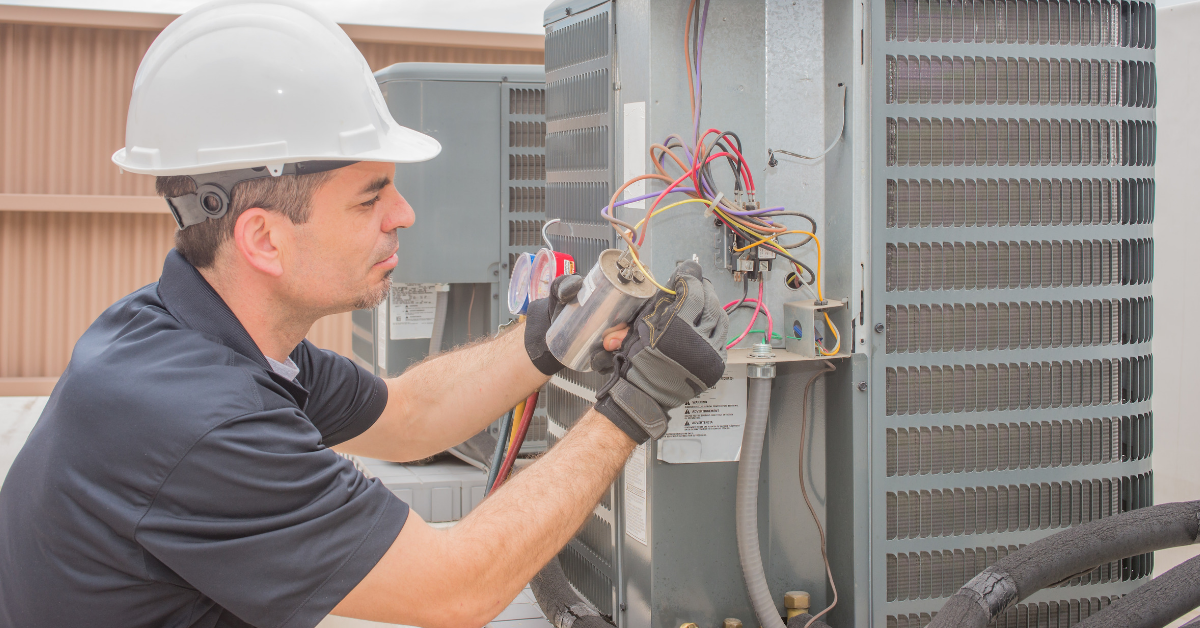5 Common HVAC Issues and How to Fix Them
by
As is the case with other appliances, there are issues people frequently experience with their heating, ventilation, air conditioning and refrigeration (HVAC) units. Many of these have simple solutions you can implement by yourself. Others are more serious and require placing a call to a seasoned HVAC technician to troubleshoot.
Dirty/Clogged Filter

One of the most common reasons for reduced or complete lack of airflow from your vents is a dirty filter. It can make your furnace and air conditioner work harder for a longer period of time to heat or cool your home. Fortunately, it also has one of the easiest fixes; all you have to do is swap out the dirty or clogged filter with a clean new one. The air filters collect dust and other pollutants to keep them out of the air in your home. Be sure to change your filter in accordance with the manufacturer’s guidelines, which vary depending on the model of your HVAC unit. Most suggest changing your filter every three to six months. Regularly changing your air filter will greatly reduce the incidence of HVAC issues.
Excess Water
A puddle of water around your HVAC unit is usually cause for concern. Furnaces have drain lines that transport the condensation into the ground and away from somewhere else within your HVAC unit where it can cause problems. If you notice water, check the condensate drain line to make sure there are no cracks. Another cause of water could be ducts or drain pans overflowing due to rapid fluctuations in humidity. These can be problematic because they can damage your HVAC unit and cause damage to drywall and other building components in contexts where units aren’t located in basements. To combat the problem of excess water, it’s a good idea to have maintenance checkups done on your unit every few months.
Thermostat Malfunction

The thermostat is the control hub of your home’s HVAC unit, and its functionality or lack thereof can greatly affect the comfort you experience within your home. If you are experiencing thermostat issues, start by removing the cover to see if the issue is being caused by dust. Also check the batteries for corrosion and replace them if necessary. One last step would be to make sure the thermostat is properly connected to the electrical system (i.e. the breaker) and the HVAC unit. If all else fails, you will want to call an experienced HVAC technician for assistance.
Pilot Light Issues
The pilot light is the heart and soul of your heating system, so it is important to keep tabs on it regularly. A properly functioning pilot light should burn blue. A flickering or yellow pilot light, on the other hand, can be signs of carbon monoxide or other kinds of contamination in the flame. In that situation, check your carbon monoxide detectors to ensure they are working and that you’re not in immediate danger. Be sure to shut off the electricity and gas from the unit prior to attempting to solve the problem yourself. Two possible solutions are tightening the thermocouple rod and adjusting the size of the flame by turning the screw. It is also a good idea to consult your unit’s manual, as it typically provides troubleshooting steps for commonly occurring issues. If nothing else, you can call an HVAC technician near you to help with furnace repair.
AC Not Cooling Enough
If your air conditioner is running but the air isn’t as cold as it should be, your unit is likely lacking a sufficient amount of refrigerant. Unfortunately, if that is the case, you are likely dealing with a leak, as refrigerant does not vacate the air conditioner any other way. Unless you are an HVAC technician, it is probably best to call a professional to locate the leak and repair your air conditioner. Many manufacturers suggest having your unit inspected annually by an HVAC technician.
As you can see, there’s a lot that can go wrong with HVAC units. With this in mind, you have the opportunity to make a rewarding career out of servicing HVAC systems as an HVAC technician. The first step toward becoming an HVAC technician is finding an accredited HVAC career training program like the one at Florida Academy.
Florida Academy’s HVAC Program is taught by expert instructors with years of experience in the industry with some of the biggest names in HVAC systems. Our evening program takes 7.5 months to finish and will prepare you for an entry-level role as an HVAC technician. You’ll get a perfect blend of textbook and hands-on learning, covering topics such as heat pumps, air distribution systems and soldering and brazing. At the end of the program, you will be prepared to break into the HVAC industry with the added bonus of Florida Academy’s lifetime job placement assistance. To learn more about Florida Academy and the HVAC program, check out https://florida-academy.edu today.

